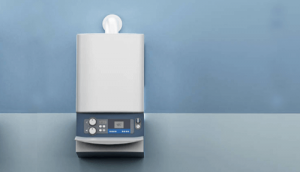
Are your programmatic advertising campaigns working as hard for you as they can?
You may think that your programmatic ads are performing well, but how can you be sure if you are not tracking your crucial ad metrics?
In today’s highly competitive digital marketplace, programmatic ads enable marketers and business owners alike to observe the performance of their digital campaigns and gain precious insights. You can determine what your target audience thinks about your ads and exactly how much ad exposure is needed to achieve your campaign goals.
However, if you are not sure how to effectively measure your programmatic ad campaigns, you won’t optimize them to your advantage.
Below , we will explain each KPI that you need to measure to determine the success of your programmatic ad campaigns. Plus, we will introduce you to the latest AI technology that enables you to closely study the interactions between your audience and your ads for even greater insight into the performance of your ads.
What is programmatic advertising?
If you want to learn how to do programmatic advertising right, you first need to understand it. Also known as programmatic ad buying, this increasingly popular process involves using software to purchase display space for digital advertising.
This advertising method makes buying ads more effective and less risky, and it uses an algorithm to allocate your budget for optimal results.
What metrics should you be measuring?
There are seven critical programmatic ad metrics that you need to be measuring if you want to make better decisions for your new programmatic advertising.
1. Impressions
The number of impressions (one of the most fundamental metrics but an important one) refers to the number of times you display a creative ad. This metric is more about potential than actual views and can help you calculate other key ad metrics.
2. Clicks
As the name suggests, clicks refer to the number of times that people click on your ad. When it comes to programmatic ads, tracking your number of clicks is crucial. Not all clicks will be intentional – this is important to note.
3. Conversions
How many times has your ad converted? This metric refers to both sales and goals you have set to achieve, such as signing up for your email newsletter or downloading a guide.
4. Cost
You need to set a budget and then stick to it if you want your campaigns to succeed. Therefore, you need to track how much your programmatic ads cost. The cost element can relate to many metrics such as cost-per-click and cost-per-conversion.
5. Reach
Reach is a brand metric that looks at how many unique users you reach with an ad campaign. This metric differs from impressions as it determines how many different people your campaign reached rather than the number of views.
6. Revenue
If you want to determine the success of your programmatic ads, you need to track how much revenue you earned from them. You can calculate this per campaign, per visit, and page.
7. ROAS
ROAS, return on ad spend, is a key performance metric that enables you to see how much profit you made from a particular ad campaign.
How to measure the success of your programmatic advertising campaigns?
As a leading programmatic advertising company, we have made it our mission to develop the best strategies and software for measuring the success of programmatic ad campaigns.
We understand that, although our customers know which metrics they need to track, they may not fully know how to measure the success of their campaigns. Therefore, this is why we have collated a list of tools that can help you to measure the success of your next programmatic ad campaign with ease.
Google Analytics
With this free online tool, you can track a user’s behavior when they click through your programmatic ad to a landing page on your site. You can find out how much time they spent on your site, did they bounce, and how many different pages did they navigate through.
You can also track whether or not they signed up for the specific service offered.
Brand lift studies
If you want to acquire qualitative data about brand awareness and consideration, brand lift studies are handy. This measurement tool works by splitting your audience into two different groups: a control group and a treatment group. As you would expect, the treatment group will get served your ads, whereas the control group will not.
Once you expose the treatment group to your ad, supply them with a survey with questions such as “which of these products/services do you recognize?” The control group will be assigned the same questions. You can then analyze their responses to see how effectively a particular ad increased awareness of your products and services.
Google DV360
Using DSP reporting tools such as Google DV360, you can evaluate several media metrics, including clicks, impressions, click-through rates, and conversions. You can even enjoy more in-depth metrics such as viewability.
Google Attribution
This data-driven attribution tool created by Google can help you determine exactly which ads, keywords, and campaigns have the most significant impact on your goals. You can effectively measure the impact of your programmatic ads across all devices and all channels on one easy-to-use dashboard.
Conclusion
If you want to ensure that your programmatic ad campaigns succeed, you need to learn how to measure them effectively. Not only can this allow you to see how your latest campaign performed, but it can also help you to learn from your mistakes and make improvements for the future.
Author Bio
PadSquad is a digital advertising company wholly focused on high-impact creative. We believe in humanizing the advertising experience, speaking to consumers as humans, not users. Our mission is to enable Brands to connect to people through more memorable advertising that stimulates the senses and inspires action. PadSquad is led by founder Daniel Meehan, an entrepreneur and change agent who began in publishing where it’s critical to deliver readers what they crave. Formerly, Dan was the founder and CEO of Haven Home Media, LLC, the first vertical content network in the Home & Garden category which sold to Reader’s Digest Association in 2011.

